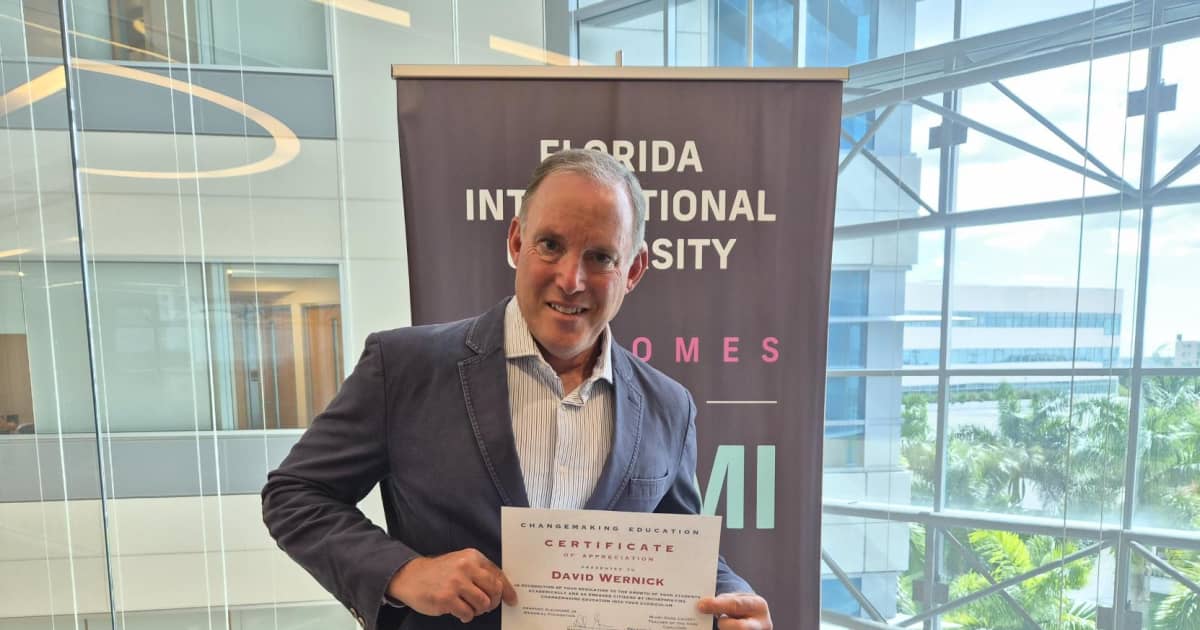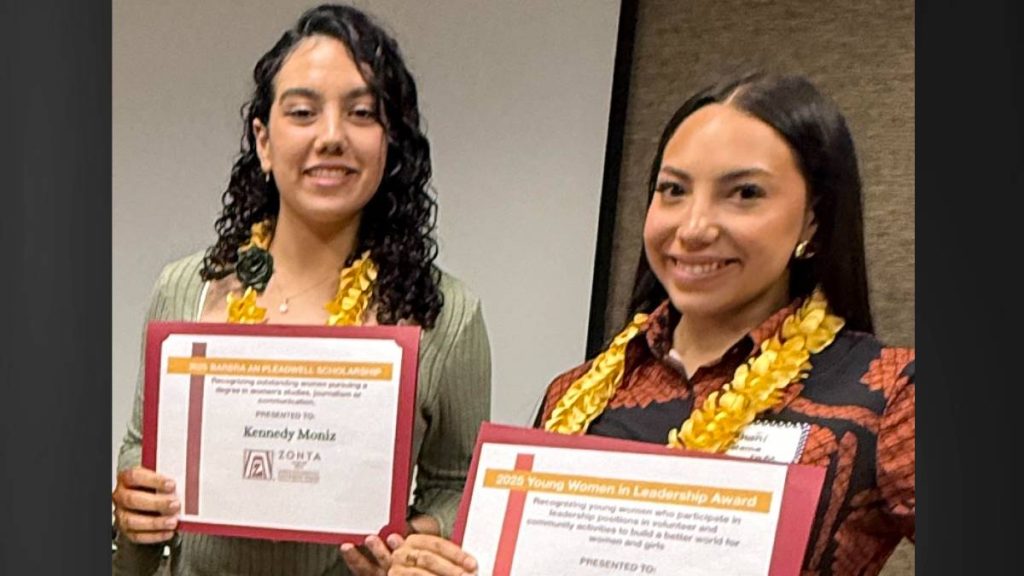Business professor honored for student-led project to empower women in India – FIU News

Recognition for Advancing Sustainable Development Goals through Education
Introduction
David Wernick, an international business teaching professor at Florida International University (FIU), has been honored with a 2025 Changemaking Education Award by the Returned Peace Corps Volunteers of South Florida. The award recognizes educators who equip students to become engaged leaders, with Wernick’s accolade specifically highlighting his work on the Bandhwari Women’s Project, an initiative that directly contributes to several United Nations Sustainable Development Goals (SDGs).
The Bandhwari Women’s Project: A Case Study in Sustainable Development
Project Origins and Mission
The Bandhwari Women’s Project was established following a visit by Professor Wernick to the village of Bandhwari, India, where he observed conditions of deep poverty disproportionately affecting women and children. This experience led to the creation of a transformative partnership between the FIU International Business Honor Society and a local women’s cooperative, supported by the Incentive Foundation. The project’s mission is to create a sustainable enterprise that addresses critical development challenges through a model of cross-cultural collaboration.
Alignment with Global Goals
The initiative is a practical application of key Sustainable Development Goals, integrating economic empowerment with educational objectives. Its core activities are aligned with the following goals:
- SDG 1 (No Poverty) & SDG 8 (Decent Work and Economic Growth): The project establishes a sustainable income stream for women in Bandhwari through the production and sale of exportable handicrafts. All proceeds are reinvested into the community, fostering local economic growth and providing decent work.
- SDG 5 (Gender Equality): By creating economic opportunities specifically for women through a dedicated cooperative, the project directly promotes female empowerment, financial independence, and leadership within the community.
- SDG 10 (Reduced Inequalities): The initiative targets the specific economic and social vulnerabilities of women and children in the village, working to reduce the inequalities they face.
Educational Framework and Global Partnerships
Integrating Education and Action
The project serves as a powerful educational tool, advancing SDG 4 (Quality Education) by providing students with a unique platform for experiential learning. The educational benefits include:
- Real-World Application: Students gain hands-on experience in international business, social entrepreneurship, and supply chain management by running the enterprise throughout the academic year.
- Global Citizenship: An immersive trip to the Bandhwari village allows students to witness the direct impact of their work, fostering a deeper understanding of global development issues and cross-cultural collaboration.
- Leadership Development: The project prepares students to become thoughtful and engaged leaders capable of addressing complex global challenges.
A Model for SDG 17 (Partnerships for the Goals)
The success of the Bandhwari Women’s Project is built upon a multi-stakeholder partnership that exemplifies SDG 17. This collaboration unites an academic institution (FIU), a student honor society, a local non-profit (the Incentive Foundation), and a community-based cooperative, demonstrating how combined efforts can achieve significant and sustainable impact.
Future Outlook
After a decade of successful operation, the project remains a testament to the power of combining education with sustainable development. Professor Wernick has expressed a commitment to continuing this journey of cross-cultural partnership and discovery, with a focus on scaling the sustainable enterprise in the coming years to further advance its impact on the community and its alignment with the Sustainable Development Goals.
1. Which SDGs are addressed or connected to the issues highlighted in the article?
-
SDG 1: No Poverty
The article directly addresses this goal by highlighting the “deep poverty” in the village of Bandhwari, which was the primary motivation for starting the project. The initiative aims to alleviate this poverty by creating economic opportunities.
-
SDG 4: Quality Education
This goal is central to the article. Professor Wernick, an educator, received a “Changemaking Education Award” for a project that prepares “students to become engaged, thoughtful leaders.” The project provides students with “real-world experience” and an opportunity to “immerse themselves in India’s culture,” contributing to education for sustainable development.
-
SDG 5: Gender Equality
The project specifically focuses on empowering women. The article notes that poverty “particularly affected women and children,” and the initiative is named the “Bandhwari Women’s Project.” It involves a partnership with a “local women’s cooperative” and the initial support included building a “women’s center,” all of which aim to improve the social and economic status of women.
-
SDG 8: Decent Work and Economic Growth
The project promotes this goal by creating a “sustainable enterprise.” The women’s cooperative produces “exportable handicrafts for sale,” which generates income and promotes productive employment. The proceeds are “reinvested back into the community,” fostering local economic growth.
-
SDG 17: Partnerships for the Goals
The success of the project is built on collaboration. The article describes a “partnership between the honor society and the local women’s cooperative.” It also mentions the crucial role of the Incentive Foundation, showcasing a multi-stakeholder partnership involving academia, a non-profit foundation, and a local community cooperative to achieve sustainable development objectives.
2. What specific targets under those SDGs can be identified based on the article’s content?
-
Target 1.2: By 2030, reduce at least by half the proportion of men, women and children of all ages living in poverty in all its dimensions according to national definitions.
The project directly tackles the “deep poverty” in Bandhwari by creating a sustainable source of income through the sale of handicrafts, aiming to lift the participating women and their families out of poverty.
-
Target 4.7: By 2030, ensure that all learners acquire the knowledge and skills needed to promote sustainable development.
The project is an educational model where students “gain real-world experience” in creating and managing a social enterprise. This prepares them to be “engaged, thoughtful leaders,” directly aligning with the goal of education for sustainable development and global citizenship.
-
Target 5.5: Ensure women’s full and effective participation and equal opportunities for leadership in all levels of decision-making in political, economic and public life.
By establishing and working with a “local women’s cooperative,” the project empowers women to participate directly in economic activities and decision-making related to their enterprise, thereby enhancing their role in the community’s economic life.
-
Target 8.5: By 2030, achieve full and productive employment and decent work for all women and men…and equal pay for work of equal value.
The initiative creates employment opportunities for women in the village by developing a market for their “exportable handicrafts.” This provides them with decent work and a source of income, contributing to productive employment within their community.
-
Target 17.17: Encourage and promote effective public, public-private and civil society partnerships, building on the experience and resourcing strategies of partnerships.
The article exemplifies this target through the described “partnership between the honor society, the local women’s cooperative,” and the Incentive Foundation. This cross-cultural, multi-sector collaboration is the foundation of the project’s success and sustainability.
3. Are there any indicators mentioned or implied in the article that can be used to measure progress towards the identified targets?
-
Economic Impact and Reinvestment:
The article mentions that “proceeds [are] reinvested back into the community.” The amount of proceeds generated and reinvested serves as a direct indicator of the project’s success in generating income and contributing to local economic growth (relevant to SDG 1 and SDG 8).
-
Project Longevity and Scalability:
The statement that the program has “touched so many lives these past 10 years” and the goal of “scaling our sustainable enterprise in the years to come” are qualitative indicators of the project’s long-term viability, impact, and successful partnership (relevant to SDG 8 and SDG 17).
-
Student Engagement and Impact:
The arrangement of a “trip to the Bandhwari village…for students to witness the direct impact of their contributions” implies that student participation and their firsthand experience are key measures of the program’s educational success. The “Changemaking Education Award” itself is an external validation and indicator of the program’s effectiveness in fostering education for sustainable development (relevant to SDG 4).
-
Functioning of the Women’s Cooperative:
The existence and continued operation of the “local women’s cooperative” to create “exportable handicrafts” is an implicit indicator of women’s economic empowerment and participation in the project (relevant to SDG 5).
4. Table of SDGs, Targets, and Indicators
| SDGs | Targets | Indicators (Mentioned or Implied in the Article) |
|---|---|---|
| SDG 1: No Poverty | 1.2: Reduce poverty in all its dimensions. | Amount of proceeds from handicraft sales reinvested into the community. |
| SDG 4: Quality Education | 4.7: Ensure all learners acquire knowledge and skills needed to promote sustainable development. | Number of students gaining real-world experience; receipt of the “Changemaking Education Award.” |
| SDG 5: Gender Equality | 5.5: Ensure women’s full and effective participation and equal opportunities in economic life. | The establishment and continued operation of the “local women’s cooperative.” |
| SDG 8: Decent Work and Economic Growth | 8.5: Achieve full and productive employment and decent work for all. | Creation of a “sustainable enterprise” for producing and selling “exportable handicrafts.” |
| SDG 17: Partnerships for the Goals | 17.17: Encourage and promote effective civil society partnerships. | The continued partnership (10 years) between the honor society, Incentive Foundation, and the women’s cooperative. |
Source: news.fiu.edu
What is Your Reaction?
 Like
0
Like
0
 Dislike
0
Dislike
0
 Love
0
Love
0
 Funny
0
Funny
0
 Angry
0
Angry
0
 Sad
0
Sad
0
 Wow
0
Wow
0














































/environment-climate-change-and-health-(ech)/water-sanitation-hygiene-and-health-(wsh)/landfill-tuvalu-36092.tmb-1200v.jpg?sfvrsn=5c21fe40_1#)



.jpg.webp?itok=0ZsAnae9#)

























